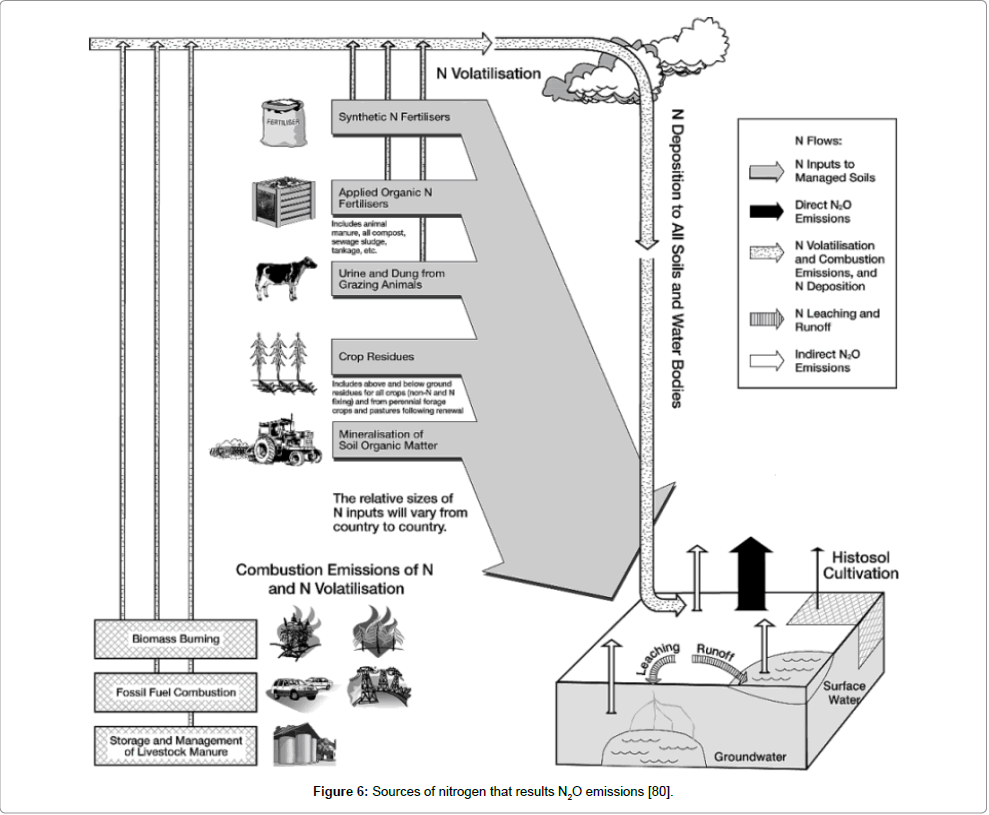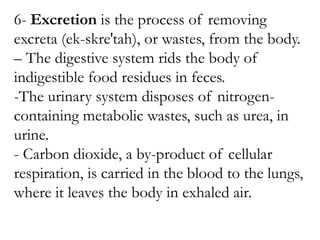Our bodies are complex biological machines, constantly processing nutrients, eliminating waste, and maintaining balance. One crucial aspect of this process involves getting rid of nitrogen-containing waste products. But how does our body accomplish this vital task? Enter the excretory system, a network of organs responsible for eliminating nitrogenous wastes and other metabolic byproducts. Let’s delve into the fascinating world of the excretory system, exploring its components, functions, and the intricate mechanisms it employs to keep our bodies clean and healthy.

Image: www.longdom.org
The Key Players: Kidneys, Ureters, Bladder, and Urethra
The excretory system comprises four primary organs: the kidneys, ureters, bladder, and urethra. The kidneys, bean-shaped organs located near the middle of the back, play a central role in filtering waste products from the blood. They extract urea, uric acid, and creatinine—all nitrogenous waste products resulting from the breakdown of proteins and nucleic acids—from the bloodstream and process them into urine.
Ureters are slender tubes that connect the kidneys to the bladder. They carry urine from the kidneys to the bladder, where it is temporarily stored. As the bladder fills with urine, it eventually triggers the need to urinate.
The urethra is a tube that transports urine from the bladder to the outside of the body. When you urinate, the muscles around the bladder contract, forcing urine out through the urethra.
Glomerular Filtration: The Initial Step of Urine Formation
The process of urine formation begins with glomerular filtration, which takes place within the kidneys. Blood enters small, ball-like structures called glomeruli, which contain clusters of tiny blood vessels called capillaries. Fluid and waste products from the blood are forced out of the capillaries into the glomerular capsule, the outermost structure of the nephron (the functional unit of the kidney). This filtrate, which contains water, ions, glucose, amino acids, and nitrogenous waste products, then passes through a series of tubes within the nephron.
Tubular Reabsorption: Reclaiming Essential Substances
As the filtrate travels through the nephron, essential substances are reabsorbed back into the bloodstream. In the proximal convoluted tubule, glucose, amino acids, and other essential nutrients are actively transported out of the filtrate and back into the capillaries surrounding the tubule. Water is also reabsorbed along the length of the nephron, mainly in a region called the loop of Henle. This intricate process ensures that valuable nutrients are retained while waste products continue their journey out of the body in the form of urine.

Image: www.slideshare.net
Tubular Secretion: Adding Toxins for Elimination
In addition to reabsorbing essential substances, the nephron also actively secretes certain substances from the bloodstream into the filtrate. These substances include additional waste products, such as excess ions and certain drugs, which are added to the filtrate to be excreted in the urine. Tubular secretion helps eliminate harmful substances from the body and maintain proper electrolyte balance.
As the waste-laden filtrate exits the nephrons, it collects in the renal pelvis, the funnel-shaped cavity within each kidney, before descending through the ureters to the bladder for temporary storage. The bladder distends as it collects urine and eventually triggers the urge to urinate
Urination: The Final Act
When the bladder signals fullness, the muscles surrounding it contract, increasing pressure on the urine contents. Simultaneously, the muscles around the urethra relax, allowing urine to flow out of the bladder and through the urethra. This process of urination empties the bladder and expels urine from the body.
Maintaining Fluid and Electrolyte Balance
The excretory system plays a crucial role not only in eliminating waste products but also in maintaining fluid and electrolyte balance within the body. The kidneys regulate the amount of water, sodium, potassium, and other ions in the blood to ensure optimal hydration, blood pressure, and organ function.
Discretionary Nitrogen Waste: A Balancing Act
The amount of nitrogen waste produced and excreted by the body varies depending on several factors, including protein intake, physical activity, and overall health. The body tries to achieve a nitrogen balance or equilibrium, where the amount of nitrogen being consumed is the same as the amount being excreted in urine and feces.
However, during certain circumstances, such as high protein intake or metabolic stress, the body may produce more nitrogen-containing waste. In such cases, the excretory system, primarily through the kidneys, adapts to enhance nitrogen excretion and maintain balance.
Variations in Nitrogenous Waste Products
Different animal groups excrete different forms of nitrogenous waste, reflecting variations in their evolutionary adaptations. For instance:
- Ureotelic organisms, such as humans, convert nitrogen waste primarily into urea.
- Uricotelic organisms, such as birds and reptiles, produce uric acid as their main nitrogenous waste.
- Ammonotelic organisms, such as aquatic animals, release ammonia as their predominant nitrogen waste.
These variations are influenced by factors like energy expenditure, availability of water, and environmental factors.
What System Rids The Body Of Nitrogen Containing Wastes
Significance of Uric Acid in Human Health
Uric acid, the main nitrogenous waste product in certain animals, also plays a role in human health when present in excess. Although urea is the predominant nitrogen waste product in humans, elevated levels of uric acid can lead to a condition called hyperuricemia.
Normally, uric acid is dissolved in the blood and excreted in urine. However, if uric acid levels in the blood become too high, it can crystallize and accumulate, potentially leading to gout or kidney stones,